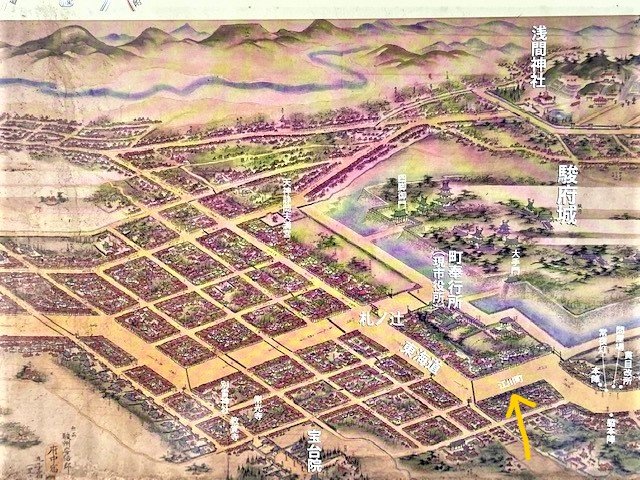
【~連載~静岡の歴史を学ぼう133】Former Egawa-cho district Part1 旧江川町 パート1
※ この記事は「静岡移住計画Facebook」に掲載しております。
江川と聞いて思い出すのは?静岡県、特に東部ではあの方でしょうか?
Former Egawa-cho district Part1
旧江川町 パート1
Egawa-cho district existed in the Edo period. However, the district does not exist in the current Shizuoka City.
江川町は江戸時代にありました。しかしその町内は今の静岡市には存在していません。
It remains as the name of a busy five-way intersection which is located between the city hall and JR Shizuoka station.
交通量の多い五差路の名前として残っていて、市役所とJR静岡駅の間にあります。

It is said that the name "Egawa" came from the prestiguous Egawa family whose generations served as local administrators in Nirayama in Izu Peninsula.
その名前の「江川」は伊豆の韮山で代々、代官を勤めていた江川家から来ていると言われています。

The most famous figure was Egawa Hidetatsu (Tarozaemon) at the end of the Edo period.
もっとも有名な偉人は江戸時代末期の江川英龍(太郎左衛門)でした。
He got interested in Western-style gunnery to defend Japan’s coastal areas. Finally, he erected Nirayama Reverberatory Furnace to produce iron efficiently.
彼は日本の海岸線を防御するための西洋式の砲術に関心を抱きました。ついには、鉄を効率的に生産するために韮山反射炉を作り上げました。

地元の人々には「太郎左衛門」の方が馴染みがあるとのことです。
Nirayama Reverberatory Furnace was designated as the World Cultural Heritage Site in 2015.
韮山反射炉は2015年に世界文化遺産に登録されました。
The ancestor of the Egawa family worked for Lord Tokugawa Ieyasu and resided in this district in Sumpu at the beginning of the Edo period.
江川家のご先祖は徳川家康公に仕え、江戸時代初期に駿府のこの町内に住んでいました。

参考文献:静岡市の史話と伝説 飯塚傳太郎著 松尾書店
この記事が気に入ったらサポートをしてみませんか?
